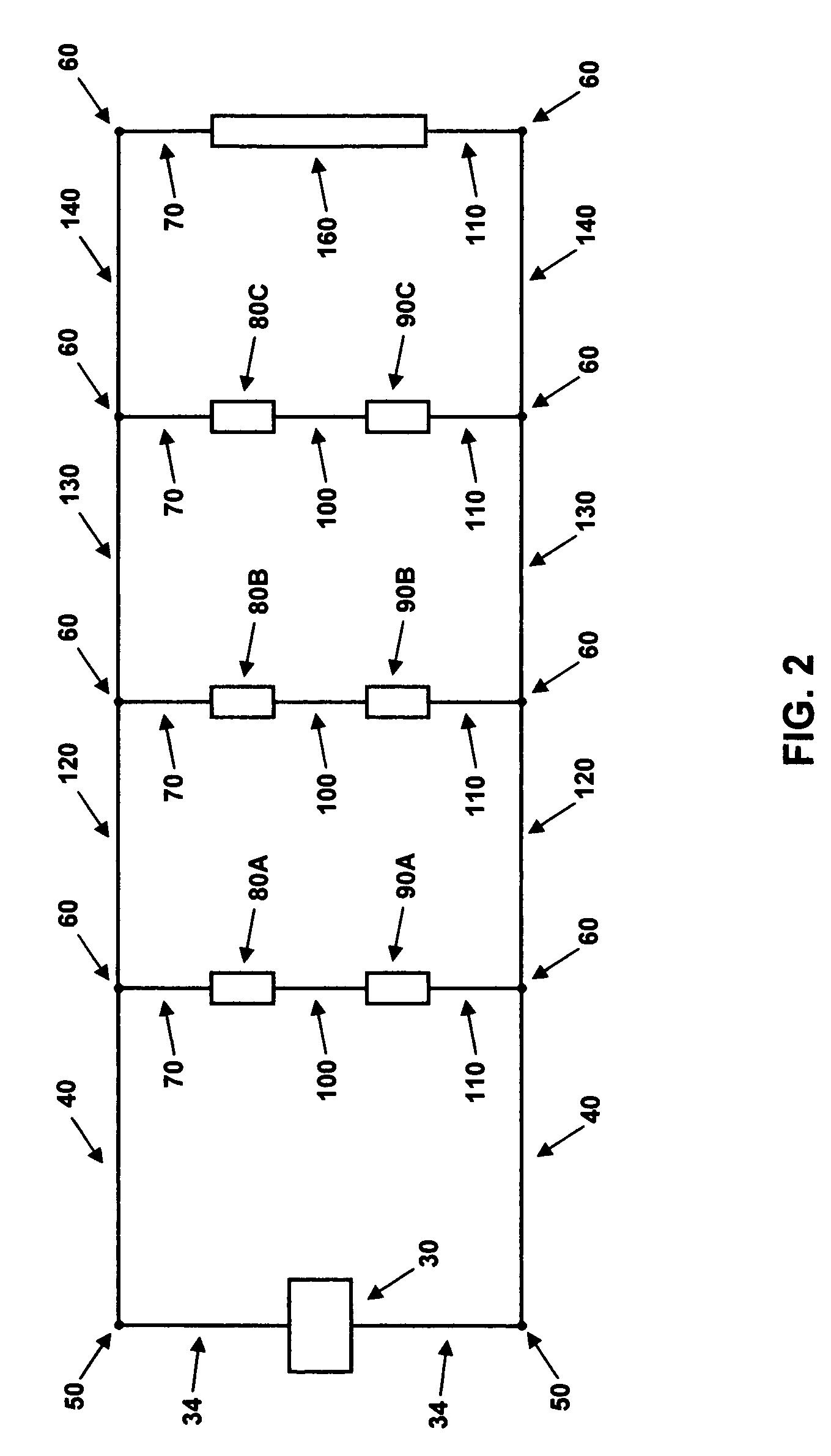Voltage equalization method and apparatus for low-voltage lighting systems
a technology of voltage equalization and low-voltage lighting, applied in lighting devices, light sources, climate sustainability, etc., can solve problems such as voltage drop along the bus lin
- Summary
- Abstract
- Description
- Claims
- Application Information
AI Technical Summary
Problems solved by technology
Method used
Image
Examples
Embodiment Construction
[0031]A low-voltage lighting system with five light bulbs of the same power and voltage ratings (internal resistance) will be used as a representative example in order to facilitate the explanation of the current invention without loss of generality. The results will then be generalized to an arbitrary number N of light bulbs, electrically connected in parallel with the power source. In the preferred embodiment, the current invention is comprised of an adjustable resistance placed electrically in series with each light bulb, as well as the method of determining the required value of the resistance for equalizing the power in each light bulb. FIG. 1 depicts a block diagram of the electrical description for the example low-voltage lighting system.
System Description
[0032]An electrical power source 30 with electrical connectors 34 is attached to electrical conductors 40 via connection nodes 50. One of the conductors 40 is connected, via a connection node 60, to an electrical connector 7...
PUM
 Login to View More
Login to View More Abstract
Description
Claims
Application Information
 Login to View More
Login to View More - R&D
- Intellectual Property
- Life Sciences
- Materials
- Tech Scout
- Unparalleled Data Quality
- Higher Quality Content
- 60% Fewer Hallucinations
Browse by: Latest US Patents, China's latest patents, Technical Efficacy Thesaurus, Application Domain, Technology Topic, Popular Technical Reports.
© 2025 PatSnap. All rights reserved.Legal|Privacy policy|Modern Slavery Act Transparency Statement|Sitemap|About US| Contact US: help@patsnap.com



